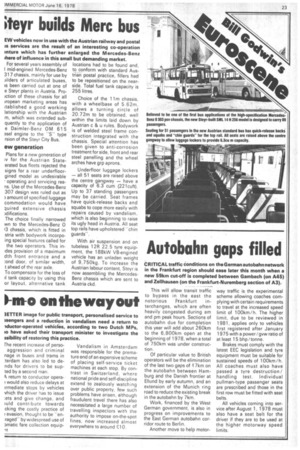Autobahn gaps filled
Page 25

If you've noticed an error in this article please click here to report it so we can fix it.
CRITICAL traffic oonditions on the German autobahn network in the Frankfurt region should ease later this month when a new 59km cut-off is completed between Gambach (on A45) and Zellhausen (on the Frankfurt-Nuremberg section of A3).
This will allow transit traffic to bypass in the east the
notorious Frankfurt interchanges, which are often heavily congested during am and pm peak hours. Sections of autobahn due for completion this year will add about 260km to the 6,800km open at the beginning of 1978, when a total of 750km was under construction.
Of particular value to British operators will be the elimination of the last two gaps of 17km on the autobahn between Hamburg and the Danish frontier at Ellund by early autumn, and an extension of the Munich ring road to reduce the existing break in the autobahn by 7km.
Work, financed by the West German government, is also in progress on improvements to the East German autobahn corridor route to Berlin.
Another move to help motor
way traffic is the experimental scheme allowing coaches complying with certain requirements to travel at the increased speed limit of 100km/h. The higher limit, due to be reviewed in 1981, applies only to vehicles first registered after January 1975 with a power/gvw ratio of at least 15 bhp/tonne.
Brakes must comply with the latest EEC legislation and tyre equipment must be suitable for sustained speeds of 100km/h. All coaches must also have passed a tyre destruction / handling test. Individual pullman-type passenger seats are prescribed and those in the first row must be fitted with seat belts.
All vehicles coming into service after August 1, 1978 must also have a seat belt for the driver if they are to be used at the higher motorway speed limits.
















































































































